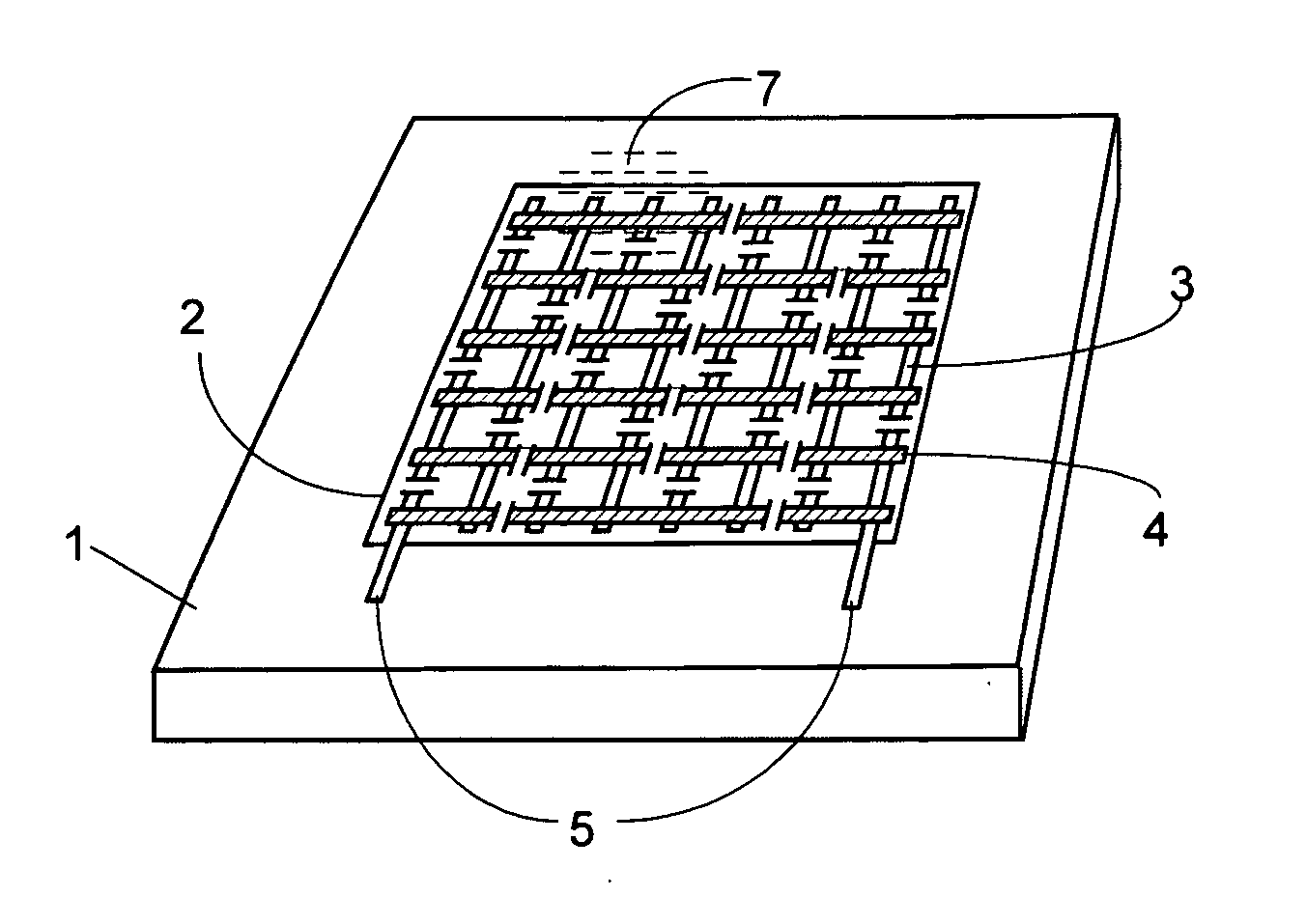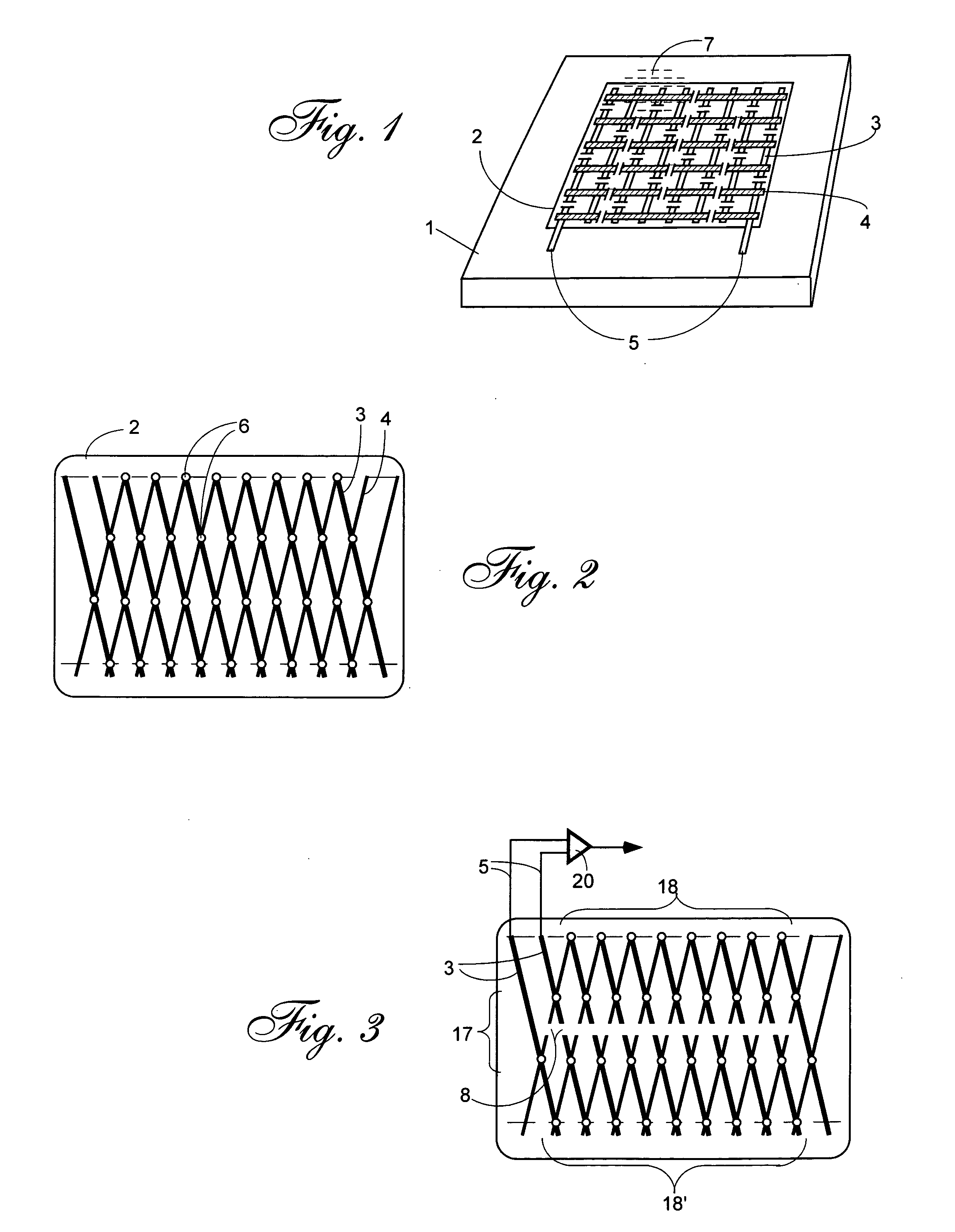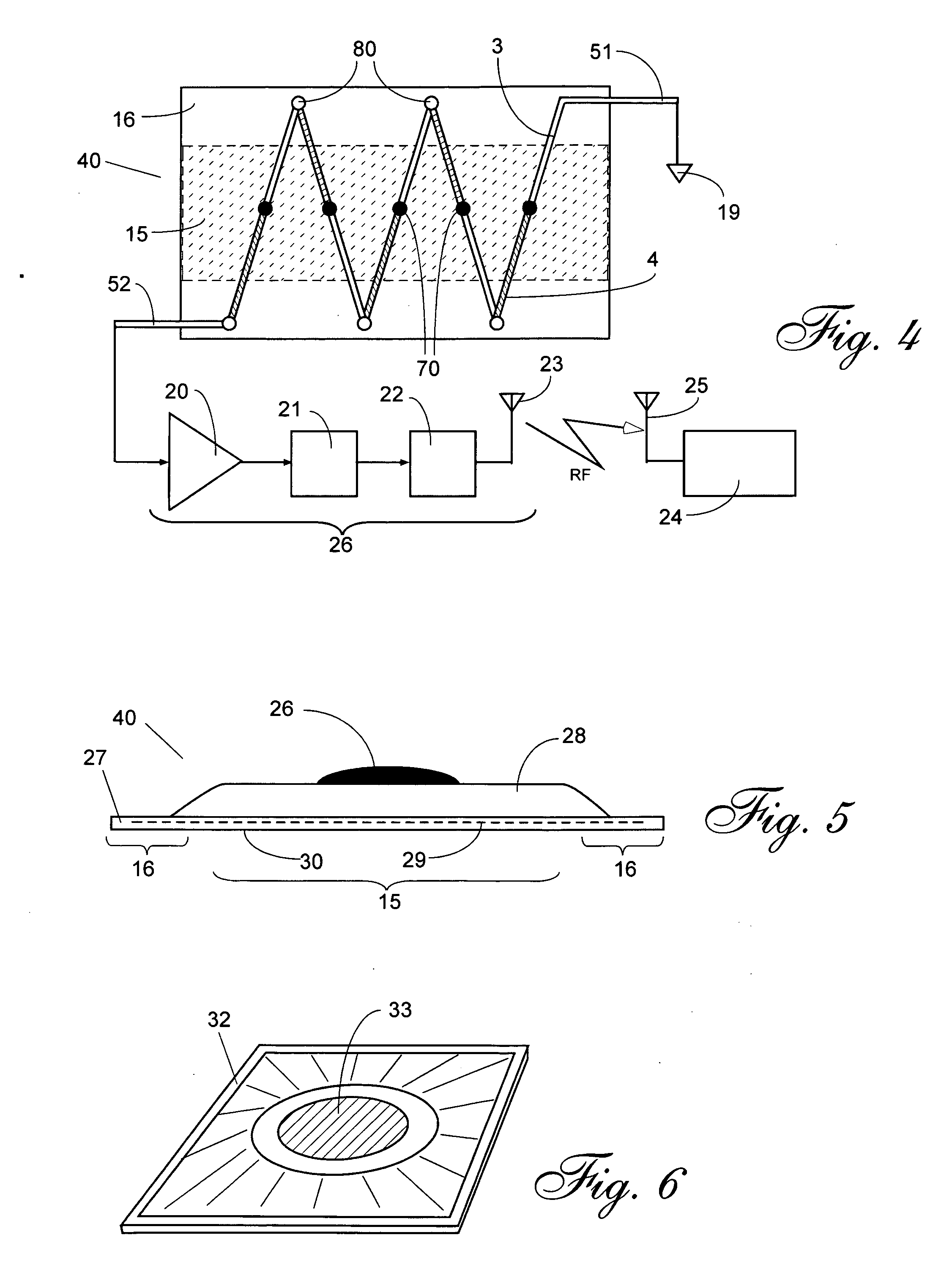Temperature gradient detector
a detector and temperature gradient technology, applied in the field of temperature gradient detectors, can solve problems such as impracticality of methods, and achieve the effects of long shelf life, simple, and inexpensive production
- Summary
- Abstract
- Description
- Claims
- Application Information
AI Technical Summary
Benefits of technology
Problems solved by technology
Method used
Image
Examples
Embodiment Construction
[0017] Several methods of a contact detection of thermal gradients are known in art. Some are based on use of absolute temperature sensors such as thermistors or RTDs, some use the IR emission detectors. However, temperature detectors belonging to a class of relative sensors appear to be more suitable for the task. A relative sensor by definition responds to a temperature difference between different parts of the sensor. The most popular is a sensor based on a thermoelectric effect, better known as a thermocouple. The variance of a thermocouple is a thermopile which is a serially connected multiple thermocouple junctions. Thermopiles are better known by their designs used for the mid and far infrared detection (See J. Fraden, Handbook of Modern Sensors. Springer Verlag. 3rd ed., 2004). A thermopile was originally invented by Joule for the purpose of increasing the output signal of a thermocouple. Each thermocouple consists of two dissimilar conductors which are joined together at tw...
PUM
 Login to View More
Login to View More Abstract
Description
Claims
Application Information
 Login to View More
Login to View More - R&D
- Intellectual Property
- Life Sciences
- Materials
- Tech Scout
- Unparalleled Data Quality
- Higher Quality Content
- 60% Fewer Hallucinations
Browse by: Latest US Patents, China's latest patents, Technical Efficacy Thesaurus, Application Domain, Technology Topic, Popular Technical Reports.
© 2025 PatSnap. All rights reserved.Legal|Privacy policy|Modern Slavery Act Transparency Statement|Sitemap|About US| Contact US: help@patsnap.com



